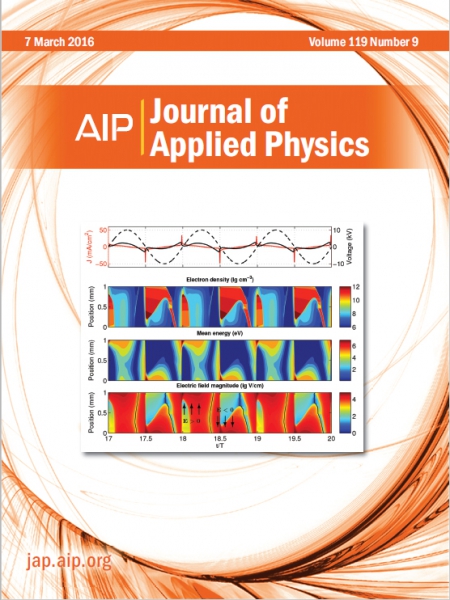8 March 2016
Using sustainable energy to split up CO2 into the base materials for new fuel molecules is an attractive route to energy storage. In the March 2016 cover article of the Journal of Applied Physics, DIFFER's Srinath Ponduri and international colleagues now present a new model of the hundreds of ways in which CO2 absorbs and redistributes energy before breaking up. The work can help to identify reactor bottlenecks and predict conversion efficiencies of CO2 into clean fuel building blocks.
 Modeling the breaking up CO2 into other molecules is easier than it sounds. A large number of CO2's energy states act as a sink for energy from the reactor, which is later exchanged among themselves. By using clever techniques to keep track of where the energy is lost, a proper understanding can be gained. By modeling all these reactions, Srinath Ponduri and his colleagues from DIFFER, Eindhoven University of Technology and the German Leibniz Institute for Plasma Science and Technology aim to understand and tune the dissociation process to higher efficiencies.
Modeling the breaking up CO2 into other molecules is easier than it sounds. A large number of CO2's energy states act as a sink for energy from the reactor, which is later exchanged among themselves. By using clever techniques to keep track of where the energy is lost, a proper understanding can be gained. By modeling all these reactions, Srinath Ponduri and his colleagues from DIFFER, Eindhoven University of Technology and the German Leibniz Institute for Plasma Science and Technology aim to understand and tune the dissociation process to higher efficiencies.
Fluid modelling of CO2 dissociation in a dielectric barrier discharge, S. Ponduri, M. M. Becker, S. Welzel, M. C. M. van de Sanden, D. Loffhagen and R. Engeln
J. Appl. Phys. 119, 093301 (2016)
https://dx.doi.org/10.1063/1.4941530
Go to the News page.